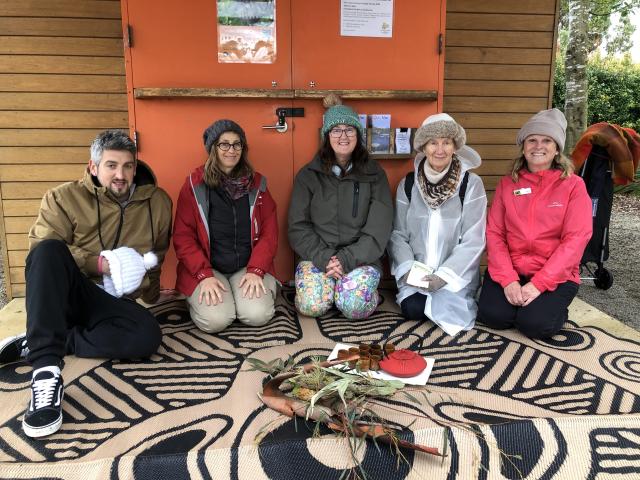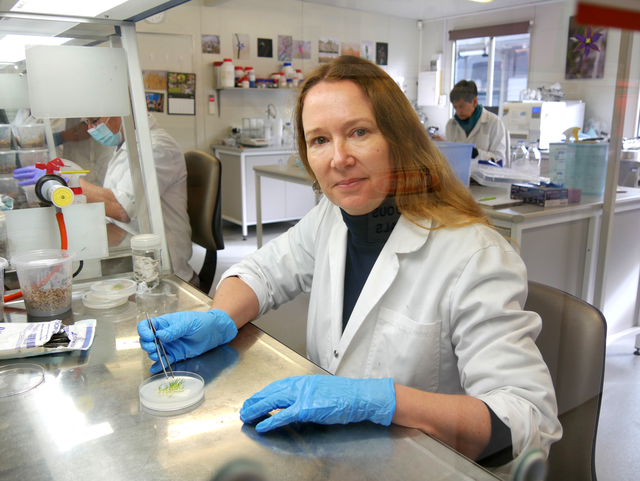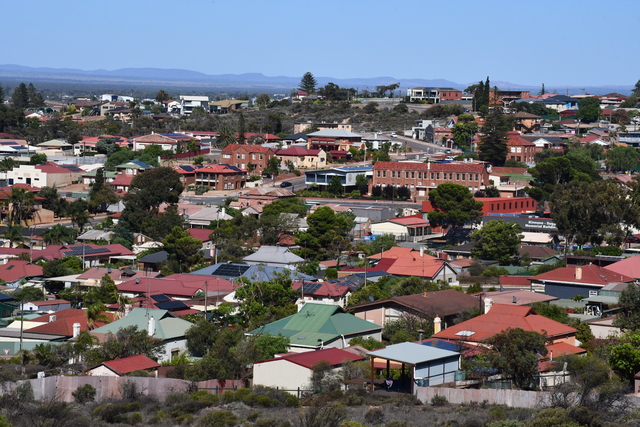A group of nature lovers braved the cold and rain over the weekend to join the Royal Botanic Gardens Cranbourne for a forest therapy session.
In a session spanning two hours on Sunday 28 May, the group were led through the Australian Garden in an immersive, sensory experience.
The session began with a history of forest therapy, followed by a ten minute meditation where participants were encouraged to open up their senses to their surroundings.
The group walked through a mint garden, touching leaves and stems and inhaling the delightful scents the rain-soaked plants had to offer.
Shortly after, the group was led to grove of eucalyptus trees, where they would spend 15 minutes in the company of a chosen tree.
The rain fell softly as some participants sat beneath the trees, watching the branches rustle in the wind.
Others spent their time embracing the trees, or tracing the grooves of their trunks with their fingers.
Forest therapy guide Karyn Folwell explained the activity was to get to know a non-human being.
One participant said the experience allowed her to notice “far more detail in the tree than ever before”.
The pace of the session was slow, the communication hushed.
In another garden, the group were given magnifying glasses through which they could observe the plant life up close.
The group crouched to behold single drops of dew on a leaf, lichens spreading across branches and bright pink spots dotting the inside of a lilac flower petal.
In The Gondwana Garden, different plant textures were explored through touch.
Wollemi pine, burrawang and soft tree ferns brought the participants from the micro-scape of the magnifying glass to the macro-scape of these large, ancient rainforest trees.
Fifteen minutes were dedicated to a “sit spot” amongst these trees, where the group sat in stillness to watch the world around them.
“It was good for a hangover,” participant Sean Flynn said.
“It was nice that it was raining, it added to the experience.
“The guides were really great too, they were very informative.”
The session was concluded with a Japanese-inspired tea ceremony.
As the group sipped jilungin bush tea, they were offered “prescriptions” for nature.
The prescriptions encouraged the participants to maintain a regular connection with nature, allowing them to receive the abundant health benefits she has to offer.
“Forest Therapy also connects people to the plants and wildlife in their locality, encouraging a deeper and more meaningful connection with their local green space, and provides encouragement to do this on a regular basis,” Program Director Susan Joachim said.
Forest therapy, or shinrin-yoku, began in Japan in the 1980s after rapid industrialisation led to poor mental health outcomes and a high suicide rate.
By the 1990s, researchers had begun studying the effects of forest bathing, giving data to our intuitive knowledge that nature is good for us.
The International Nature and Forest Therapy Alliance (INFTA), through which Ms Folwell was certified, said there are numerous benefits to the practice of forest bathing.
These include reduced blood pressure, reduced cortisol levels, reduced anxiety and depression, enhanced energy level and better concentration.
Forest bathing also allows for a surge in the activity of cancer and tumor fighting blood cells, called “natural killer” cells.
Trees and plants are also known to release phytoncides, which are anti-bacterial, anti-fungal, anti-inflammatory, anti-microbial and anti-viral substances.
In the practice of forest therapy, participants breathe in the phytoncides which in turn boost their immune system.
There are indirect benefits too, including reduced risk of obesity, better sleep quality, reduced risk of heart and lung disease and less stress.
The practice also shines light on conservation and the stewardship of green spaces.
“Forest therapy guides choose activities that highlight the value of protecting nature and the need to minimise impact on the environment,” Program Director and INFTA President Susan Joachim said.
“Forest therapy walks are slow, sensory and mindful, which rekindle our connection and relationship to nature.
“Participants become aware of the value of green spaces within the urban environment.”

















